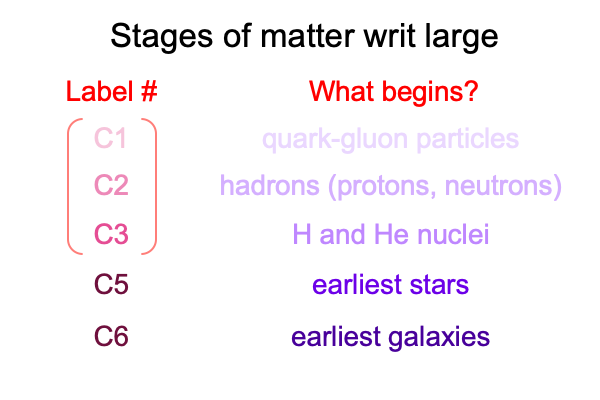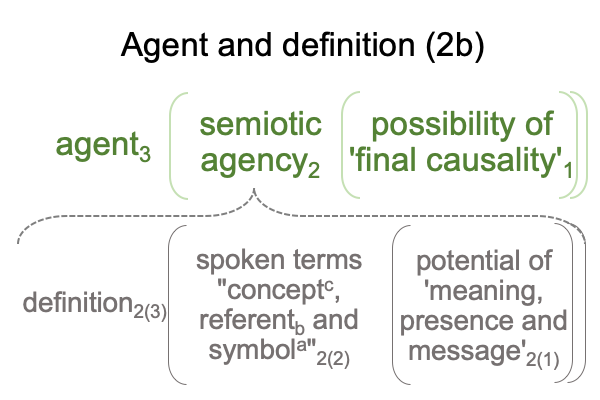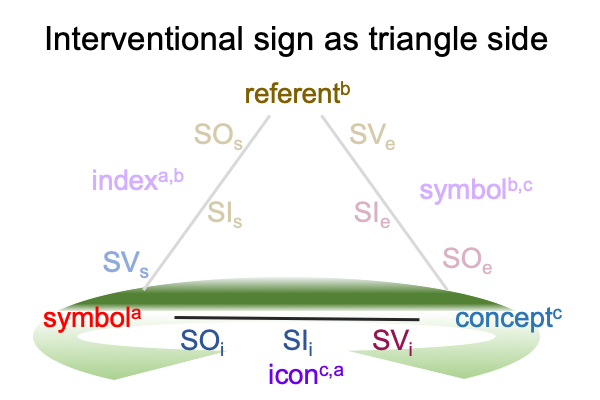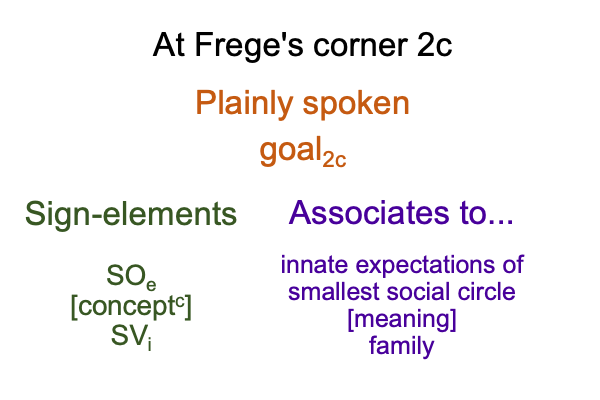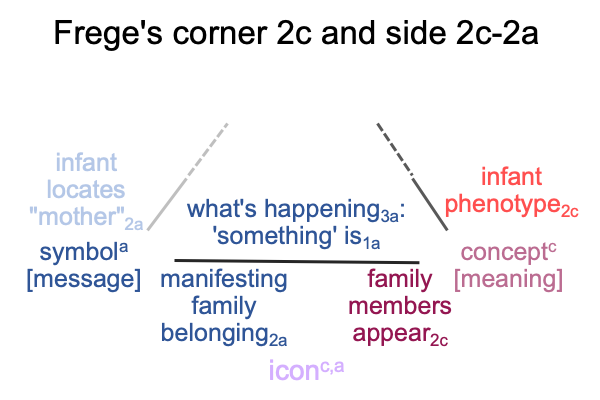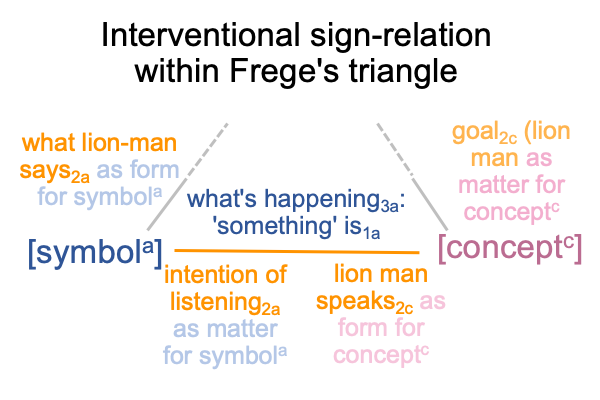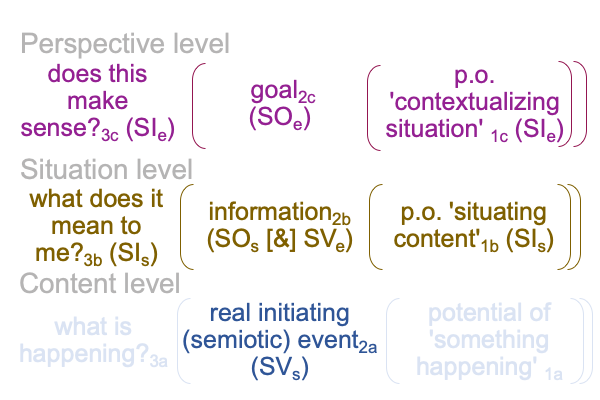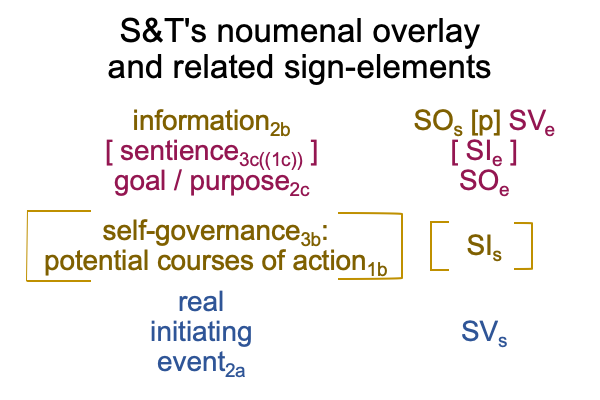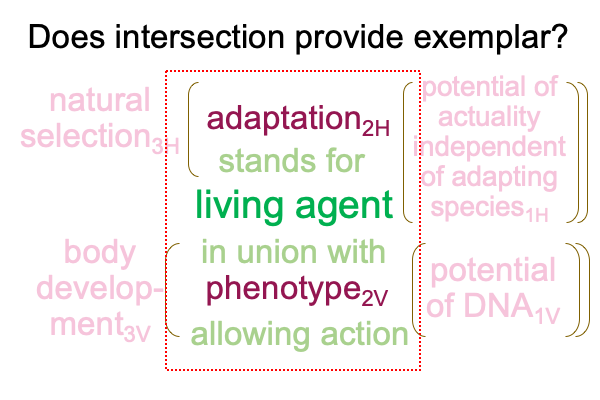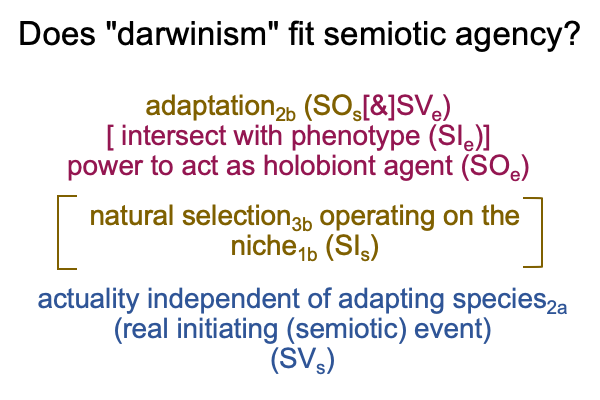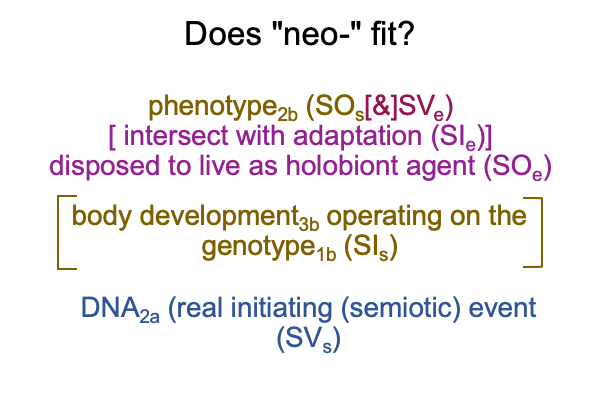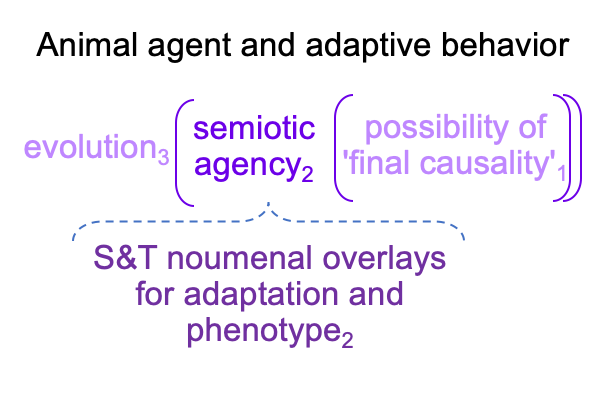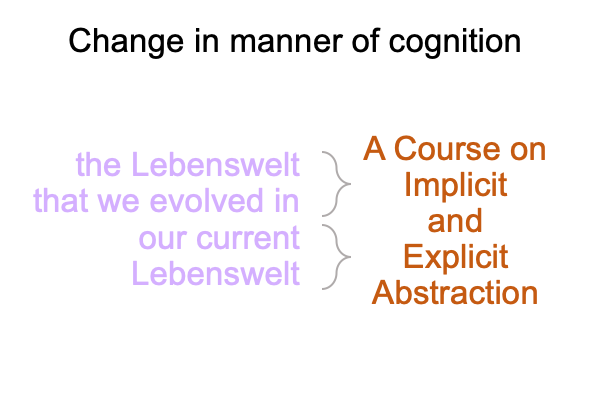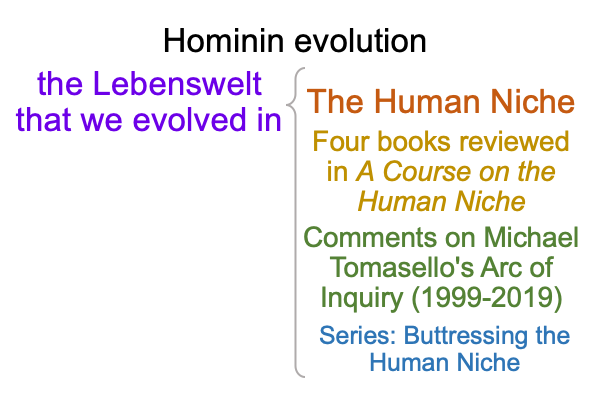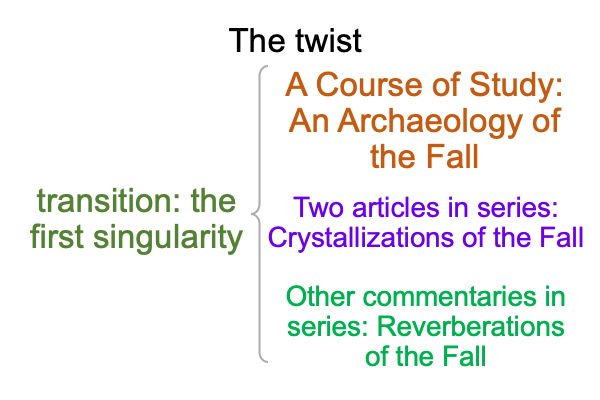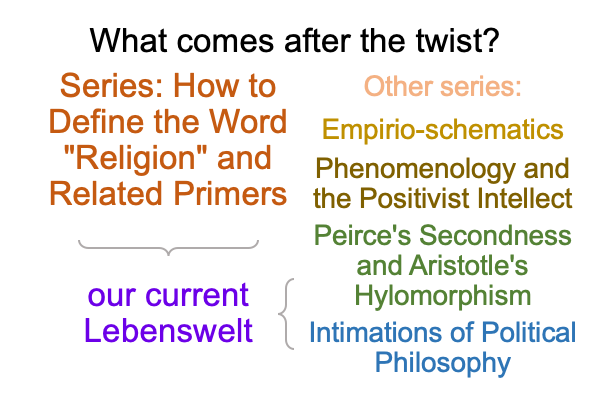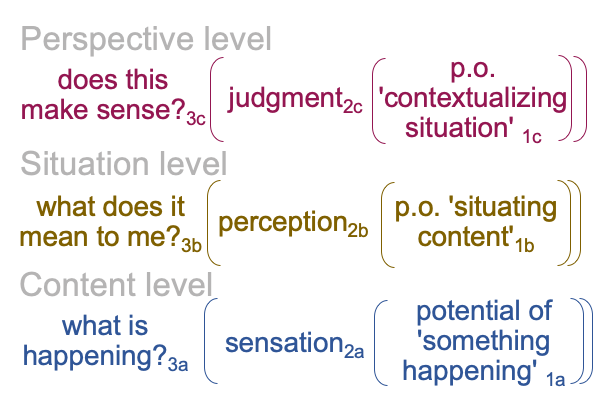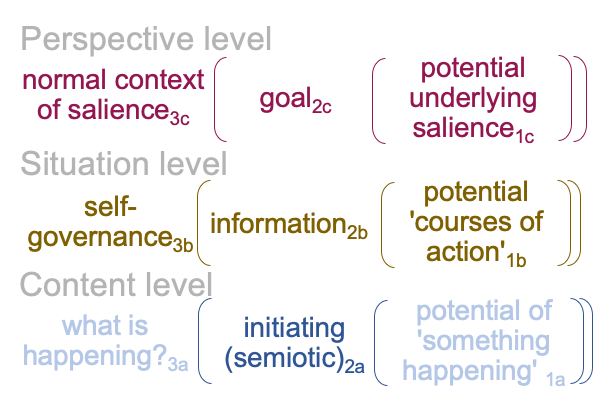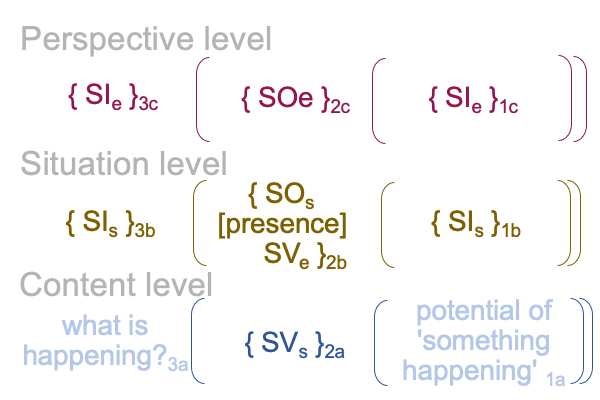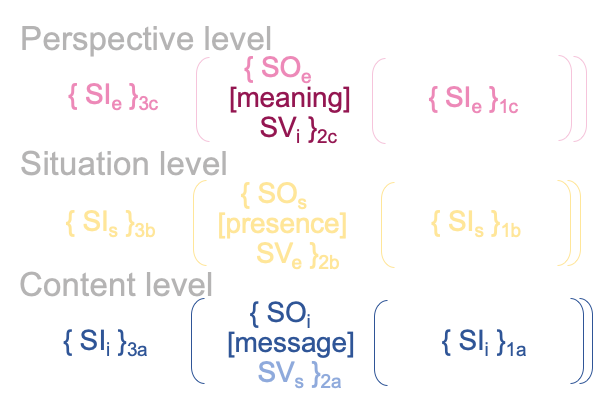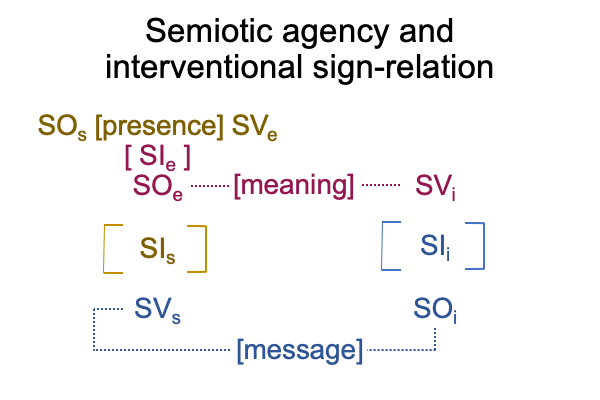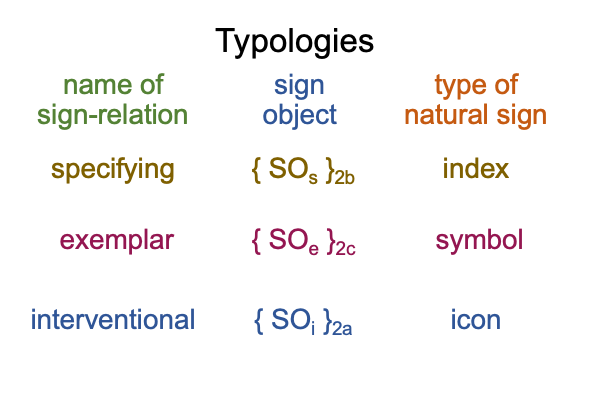Looking at George Mikhailovsky’s Chapter (2024) “Meanings, Their Hierarchy, and Evolution” (Part 1 of 9)
1053 The text before me is chapter six of Pathways (see point 831 for book details, pages 101 through 136). The author is one of the editors of Pathways.
1054 To me, the abstract introduces evolution writ large.
The abstract suggests that the interventional sign-relation precedes semiotic agency, as far as evolution writ large goes. Evolution writ large includes the evolution of the inanimate universe along with the evolution of life.
1055 Before life, inanimate objects manifest only as meanings-in-themselves. An evolving macroscopic thing may be labeled an “eventity”, which seems like a real initiating (semiotic) event2a (SVs) or an action that could be goal-directed2c (SVi).
Surely, some eventities rely on lower-level entities. But, what about agency and subagency?
With non-human life, hierarchies of sub-agents3 operate within each living agent3 (or “holobiont”).
With human life, persons3, who are holobionts in terms of anatomy and physiology, operate as subagents within… what?… social circles?
1056 The introduction (section 6.1) starts with an observation. The term, “meaning” is typically used in three situations.
Here is the list along with associated sign-elements.
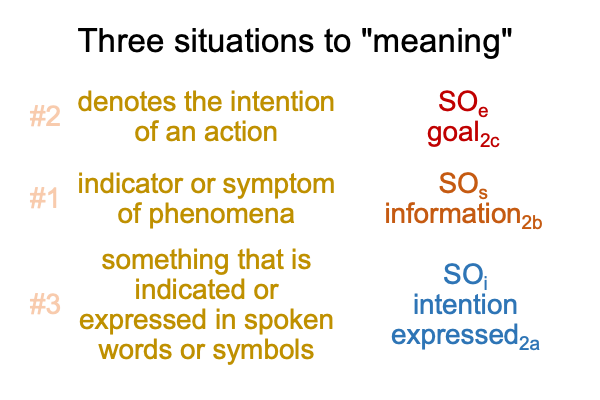
1057 This coincidence is remarkable. At the very start of the introduction, the author offers situational instances of “meaning” that correlate to the three sign-objects intrinsic to a three-level interscope.
The author then writes that he is interested in the first two types (the ones associated with semiotic agency) but not so much the third type (the one associated with the interventional sign relation), because this one is already well-developed in linguistic semiotics.
1058 But, there is another coincidence to note.
Recall that Peirce’s typology of natural signs is based on the categorical qualities of the sign-object.
The icon is a sign-relation whose sign-object is based on the qualities of firstness, including images, pictures, unities, wholes. The logic of firstness is inclusive and allows contradictions. A sign-vehicle stands for its sign-object on the basis of similarity or imagery.
The index is a sign-relation whose sign object is based on the qualities of secondness, including contact, contiguity, pointing, influence, cause and effect and so on. The logic of secondness includes the law of noncontradiction. A sign-vehicle stands for its sign-object on the basis of indication and pointing.
The symbol is a sign-relation whose sign-object is based on the qualities of thirdness, including normal context, mediation, judgment, habit, tradition and so on. The logics of thirdness are exclusion, complement and alignment. A sign-vehicle stands for its sign-object on the basis of convention.
1059 Since all sign-objects belong to secondness, I can assign Peirce’s typologies on the basis of the category of the level in a three-level interscope. Icon goes with the level of content. Index associates the situation level. Symbolmatches the perspective level.
1060 Here is a list of associations.
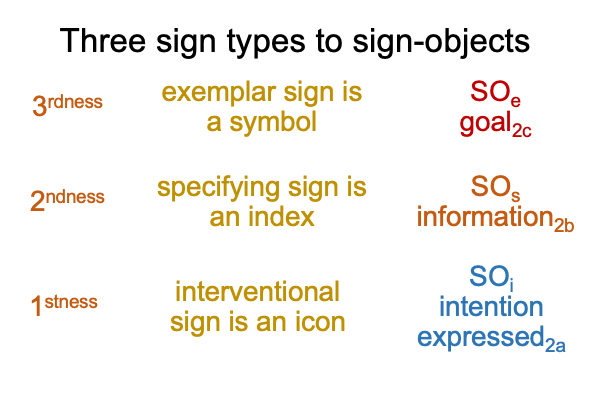
1061 I ask, “How well do the two coincidences correspond?
1062 I start with thirdness, an exemplar sign is a symbol whose sign-object, SOe, denotes a goal2c on the perspective level. The sign-object has the qualities of both acquired habit and innate disposition. So, the assignment of symbolworks.
1063 For secondness, a specifying sign is an index whose sign-object, SOs, denotes a symptom2b on the situation level. I suppose that corresponds to information2b. A symptom2b virtually situates its phenomenon2a in the same way that information3b virtually situates an initiating (semiotic) event2a. The sign-object holds the qualities of indication and pointing. So, the assignment of index works.
1064 For firstness, an interventional sign is an icon whose sign object, SOi, denotes something that is indicated or expressed in spoken words or symbols2a on the content level. Does that correspond to intention expressed2a (SOi)? Or, better yet, does that correspond to an image of intention expressed2a (SOi) that is contiguous with a real initiating event2a (SVs) in the dyadic content-level actuality2a?
Is the third situation for “meaning” an image that is indicated or expressed in spoken words and symbols.
Imagine that!
‘Something’ is an image.

